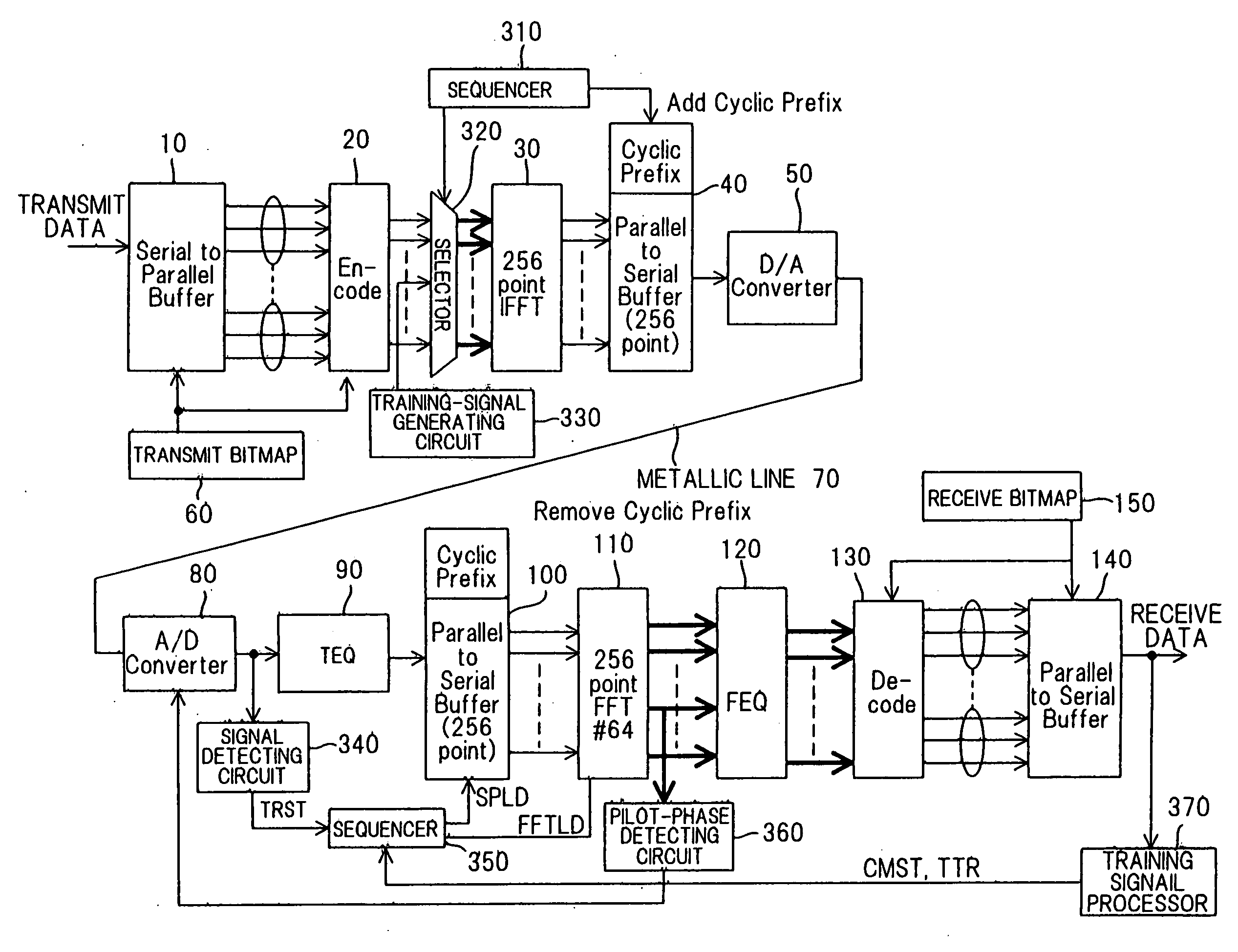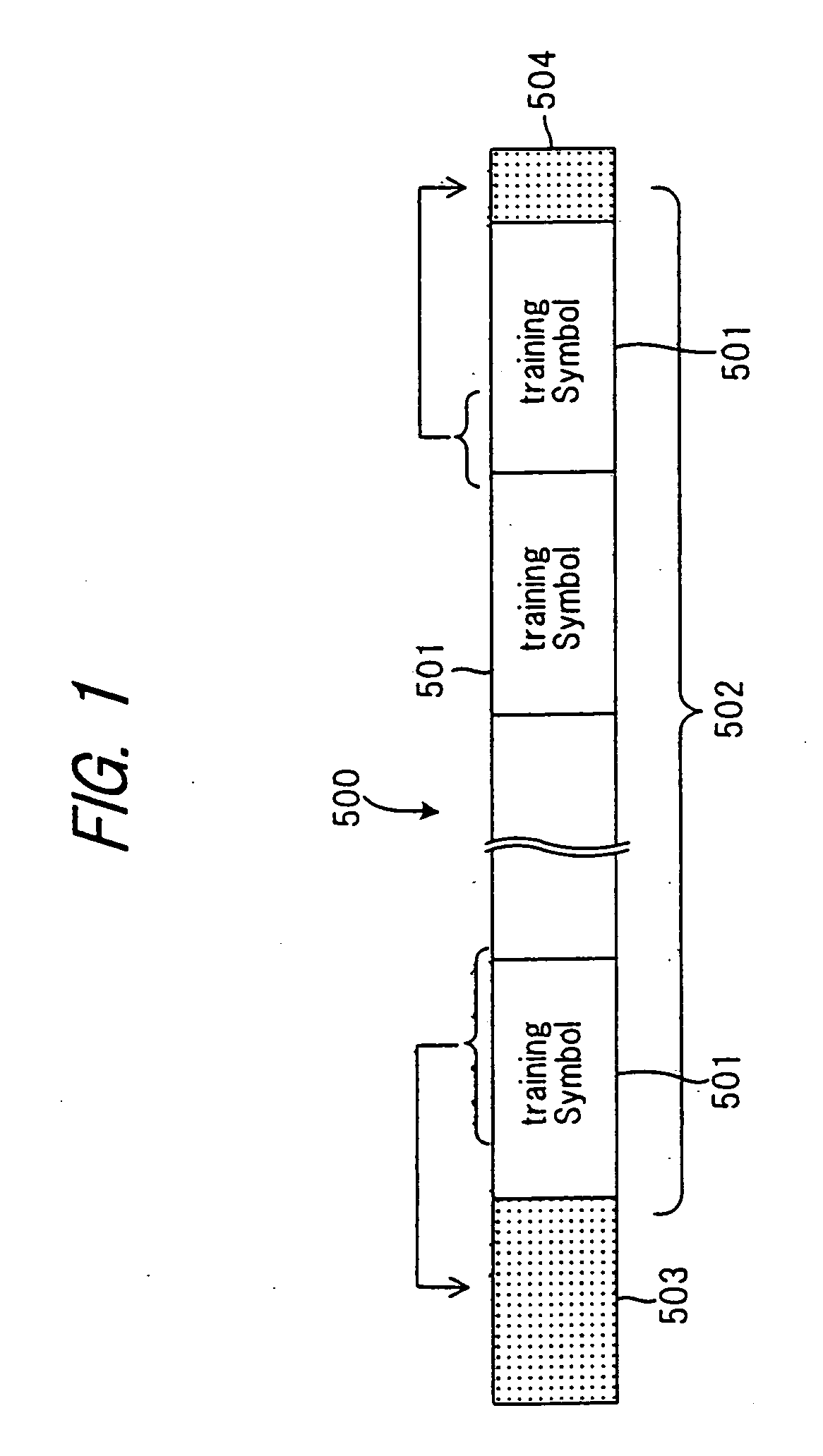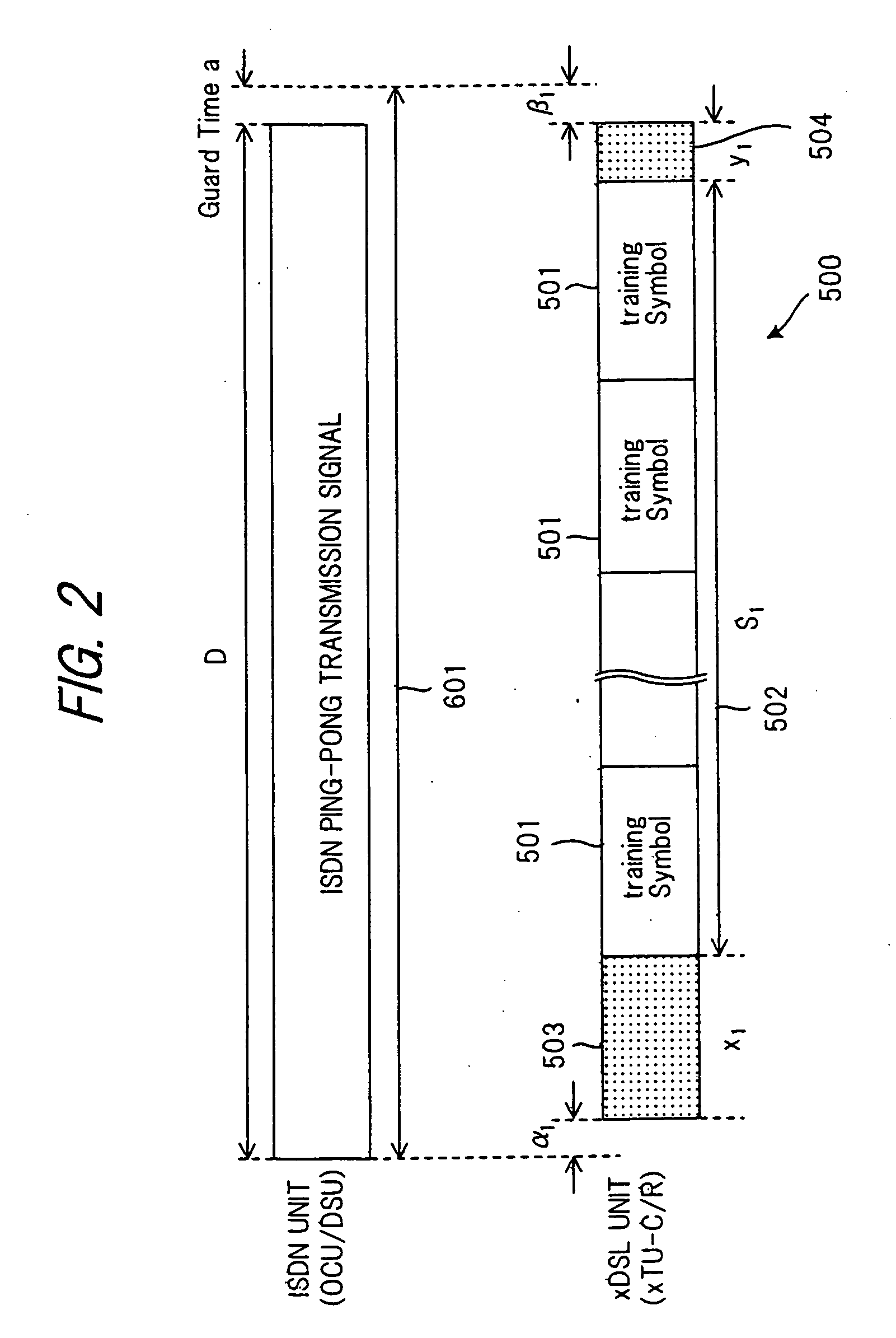Digital subscriber line transmission method, apparatus and system
a subscriber line and transmission method technology, applied in line transmission details, orthogonal multiplexes, baseband system details, etc., can solve the problems of loss of continuity of transmit signal, limited adsl transmission rate, crosstalk noise, etc., to achieve excellent s/n ratio, short training time, and accurate and efficient
- Summary
- Abstract
- Description
- Claims
- Application Information
AI Technical Summary
Benefits of technology
Problems solved by technology
Method used
Image
Examples
first embodiment
(C) First Embodiment of Burst Frames at Training Time and Normal Communication Time
[0199] G992.2 (G.lite) technology is available as a conventional xDSL scheme. With G.lite, 4.3125 kHz is used as the carrier frequency spacing, 256 as the number of samples within one DMT, and #64 as the carrier which transmits the pilot tone. According to the first embodiment of the present invention, 4 kHz, which is lower than in the G.lite scheme, is used as the carrier frequency spacing. As for the other items, 256 is selected as the number of samples in one DMT symbol and #64 is selected as the carrier which transmits the pilot tone, just as in the G.lite scheme.
[0200] In the first embodiment, the FFT sampling frequency of the transmitted signal is 1024 kHz in view of the carrier frequency spacing and number of samples. Further, the frequency of the pilot tone is 4 kHz×64=256 kHz. In other words, the data per cycle of the pilot tone is four sample's worth. Further, in the first embodiment, the s...
second embodiment
(2) Second Embodiment
[0228] As in the case of the G.lite scheme, the second embodiment relates to a case where 4.3125 kHz is selected as the carrier frequency spacing, 256 as the number of samples and #64 as the carrier which transmits the pilot tone.
[0229] According to the second embodiment, the sampling frequency is 1104 kHz and the pilot-tone frequency is 276 kHz. Accordingly, 3.623188 μs (four samples) constitutes one pilot tone cycle in a manner similar to that of the first embodiment. Further, in the second embodiment, the length of the cyclic prefix is, e.g., 28.98551 μs (32 samples), which is longer than in the case of the G.lite scheme, the length of the redundancy signal 503 added onto the beginning at training time is 115.94203 μs (128 samples), which is a redundancy length sufficiently longer than the cyclic prefix of the G.lite scheme, and the length of the redundancy signal added on at the end is 18.11594 μs (20 samples). In view of the foregoing, the structures of th...
PUM
 Login to View More
Login to View More Abstract
Description
Claims
Application Information
 Login to View More
Login to View More - R&D
- Intellectual Property
- Life Sciences
- Materials
- Tech Scout
- Unparalleled Data Quality
- Higher Quality Content
- 60% Fewer Hallucinations
Browse by: Latest US Patents, China's latest patents, Technical Efficacy Thesaurus, Application Domain, Technology Topic, Popular Technical Reports.
© 2025 PatSnap. All rights reserved.Legal|Privacy policy|Modern Slavery Act Transparency Statement|Sitemap|About US| Contact US: help@patsnap.com



